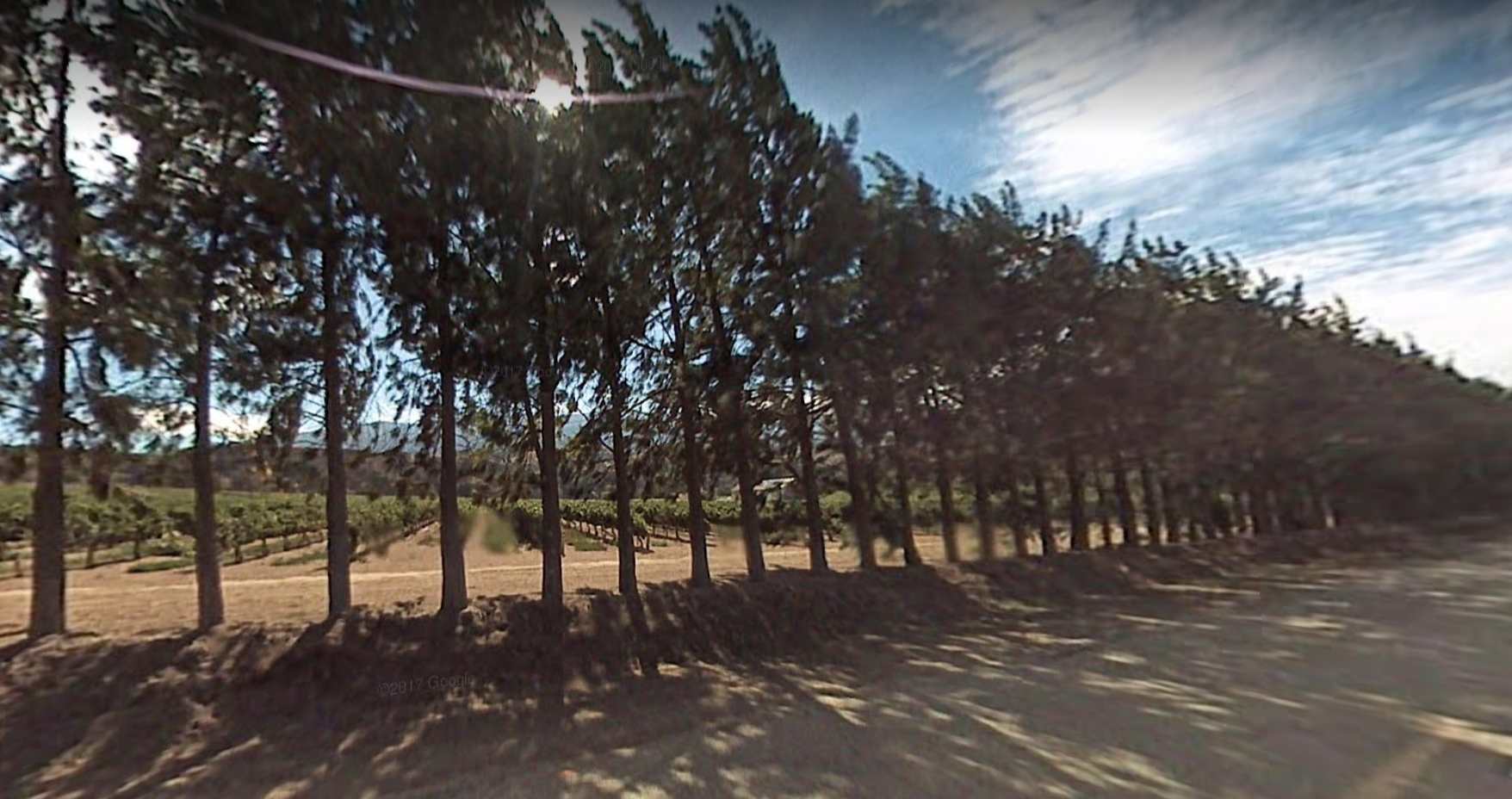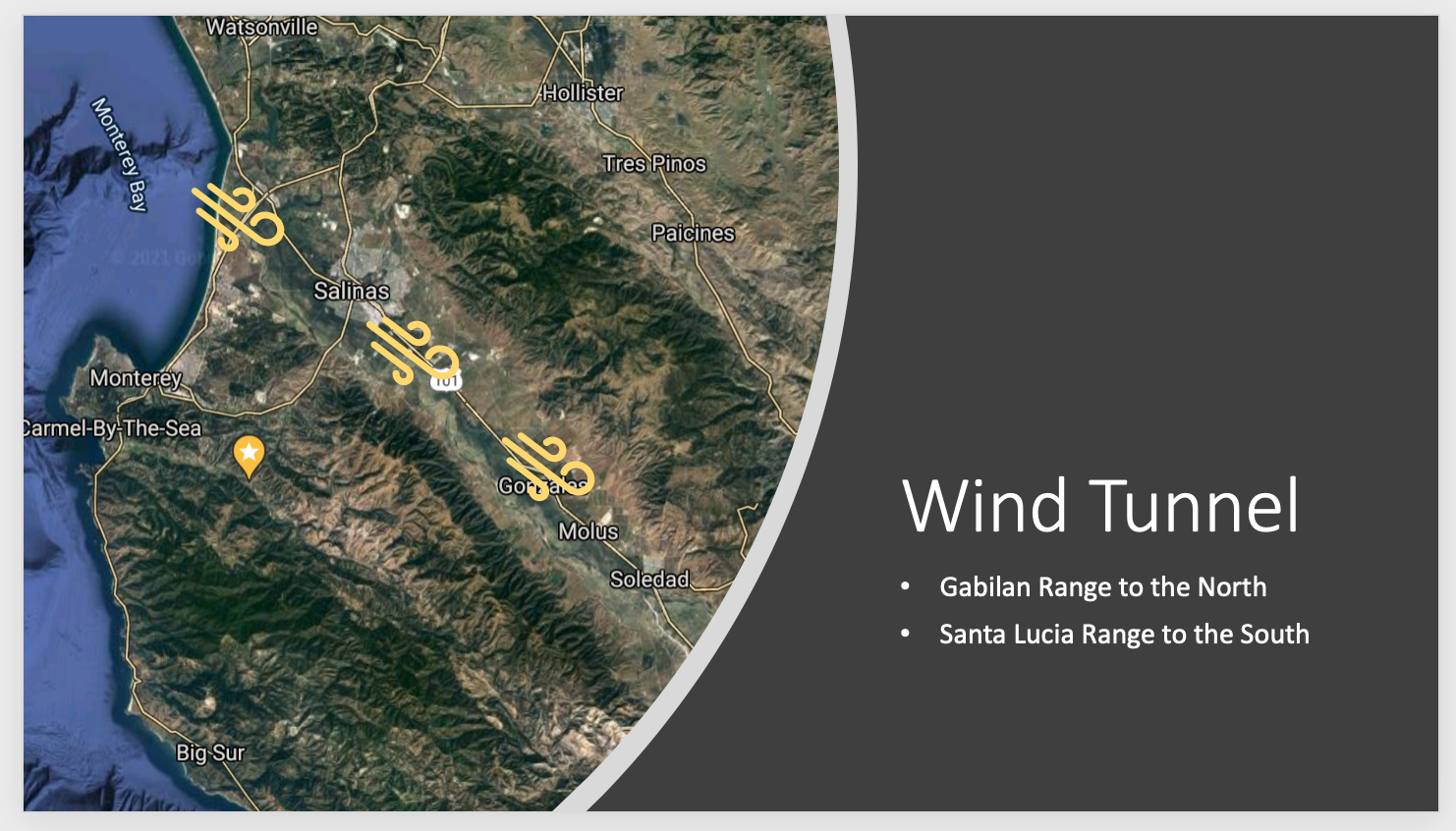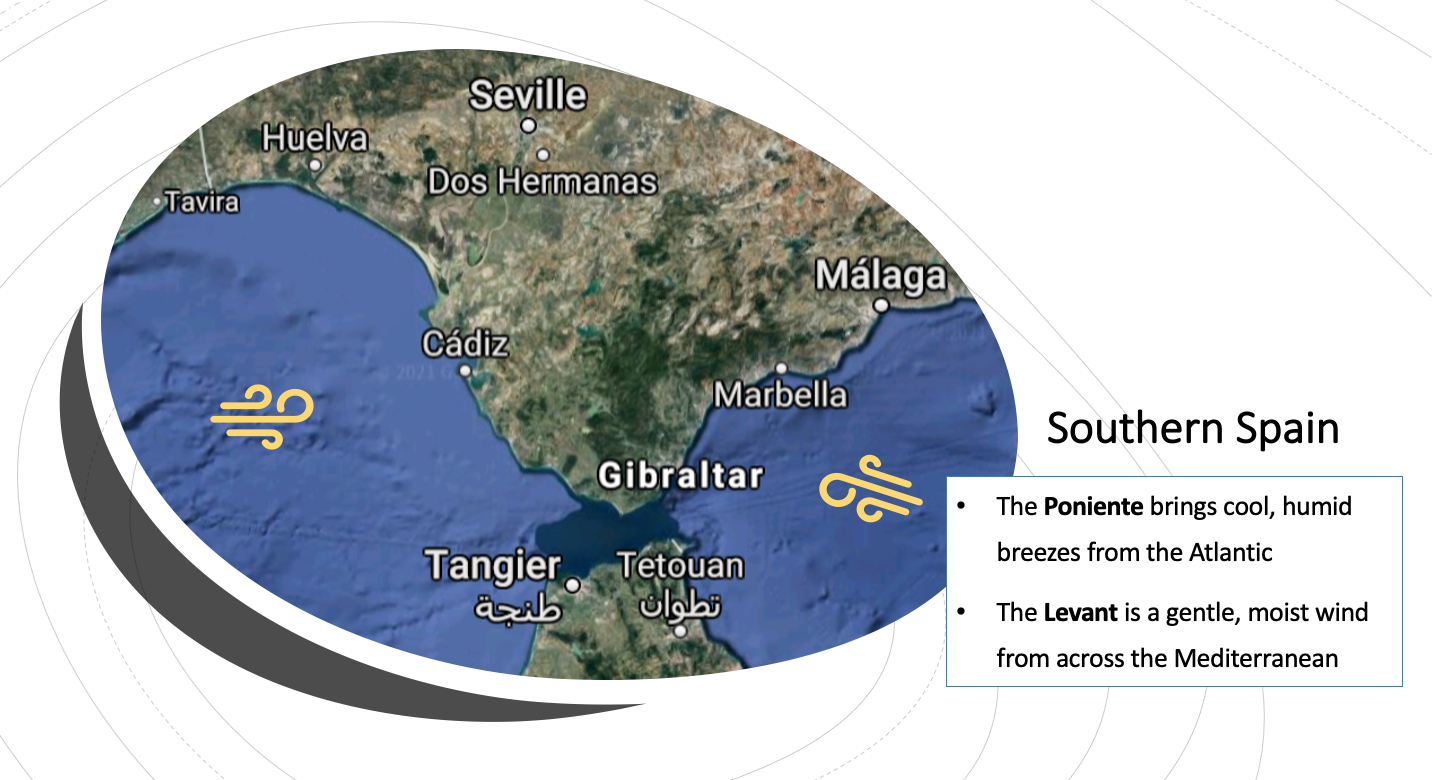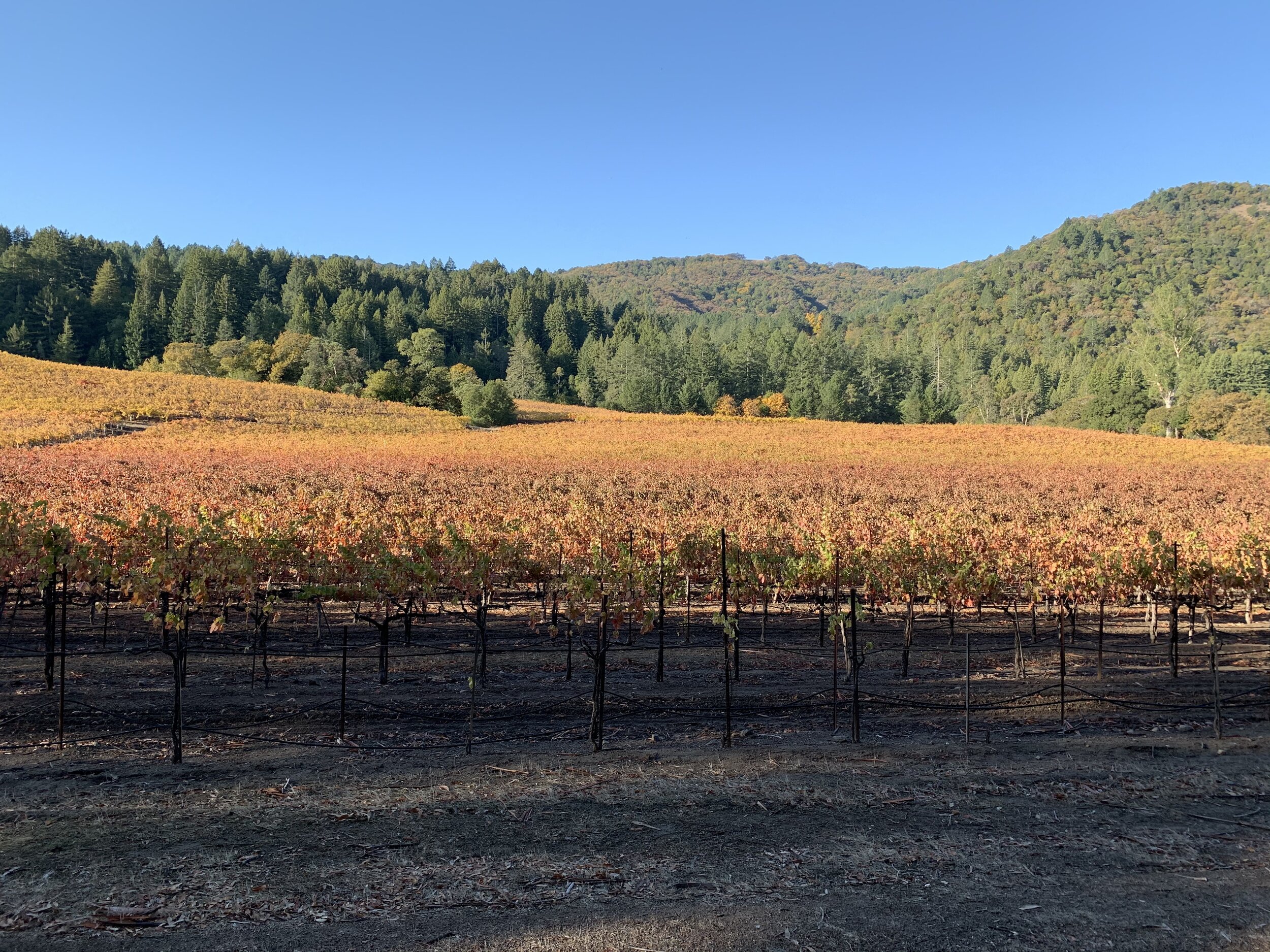
Try to think about major climatic factors in the vineyard and you’re likely to come up with sunshine, rainfall, and temperature. Logical choices. But what about wind?
Wind affects wine quality in several ways. Wind can knock off grapevine flowers, interrupting pollination and decreasing yields. Wind can reduce frost risk by circulating cool air. Strong wind can stop photosynthesis. Wind can even influence whether a vineyard will be suitable for organic viticulture.
Wind and wine have a complicated relationship. Let’s take a look.
How Wind Affects Grape Vine Maturation?
Imagine spending a sunny, gusty day outside. The hours pass and you’re likely to feel slightly chapped and dehydrated. Grapevines experience something similar thanks to their physiology.
Under normal growing conditions, small holes on the leaves, called stomata, allow the vine to transpire, or exchange water between the plant and the atmosphere, as Mother nature’s way to help the plant regulate temperature.
Blustery days increase the transpiration rate, putting the vine at risk of significant water loss.
In response, the plant closes off the stomata as a natural defense mechanism, but this also stops photosynthesis and carbohydrate production.
The more wind there is, the more stomata close, resulting in less photosynthesis and slower growth.

Here in the Coastal California region, two key mountain ranges in Monterey County, the Santa Lucia Range and the Gabilan Range, parallel each other and act to form a wind tunnel bringing coastal breezes off of the Monterey Bay.
The wind tunnel creates howlers that whip down the Salinas River Valley at such forces that it can rip off leaves, break canes, and stop photosynthesis.
The resulting vine stress delays ripening.
The valley’s distinctive physiography means that budbreak and harvest happen on average two weeks earlier and later, respectively, than the rest of California.
This longer growing season, called hang time, allows the grapes to ripen more slowly, developing greater complexity while still maintaining good acid levels.
In fact, the region has one of the longest growing seasons in the world making it capable of producing a spectrum of quality wines.
But too much wind can kill a vine.
Growers have a few defensive strategies for windy regions.
One option is head training a vine, meaning a single vine unattached to trellis wires, with a support pole. The vine canes get wrapped around the pole forming a protective barrier for the leaves and berries.
Unfortunately, this means you have to manage the vineyard by hand, which is a costly proposition.
Another strategy involves planting rows of trees as windbreaks, a multi-year project, but, as we know, nothing in wine is for the impatient.
Wind and Temperature in the Vineyard.
At the vineyard level, wind can move heat towards or away from a vineyard plot. Optimal growing temperatures are just below 86ºF/30ºC. Wind can cool a hot vineyard, or warm a cold vineyard, and therefore be a net positive.
Classic examples are the Poniente and the Levant winds that cross over the Jerez region in Spain, the home of Sherry wines.
The Poniente brings refreshing westerly ocean breezes off the Atlantic while the easterly Levant starts out as a gentle, moist wind crossing the Mediterranean that becomes hot and dry as it continues overland. Both come together to create a unique growing climate in southern Spain.

How does wind affect frost risk in a vineyard?
Late spring frosts are a vineyard’s evil nemesis – like DC Comics’ Minister Blizzard, or, a personal favorite, Captain Cold.
Warming temperatures leading up to a frost event signal vines to start growing, and they push out their new leaves.
Unexpected cold snaps with a frost event descend on vineyards, blanketing the new growth with ice crystals.
These ice crystals destroy leaf tissue cells, killing the vine. If you’ve ever had a head of lettuce that gets too close to the cooling element of your fridge and turns black, you get the idea.
The 2021 frost event across much of Europe ravaged vineyards on the continent, damaging an estimated 80% of vines.
An unseasonably warm March in 2021 triggered vines to begin budding early. April’s cold snap froze off this new growth, killing huge swaths of cropland.
Farmers and vineyard owners heroically tried to save their crops by lighting candles and tending smudge pots in the vineyards – even taking to the skies by flying helicopters overhead.
Candles and Helicopters: Wind and Inversion in the Vineyard
Inversion happens when a blanket of cold air gets trapped near the ground with warmer air higher up.
Normally, hot air sinks and cool air rises, but with inversion, the air circulation stops.
Anyone who lives in a cool climate valley surrounded by mountains has probably experienced inversion in the winter when smoke or smog gets trapped on the valley floor. Yuck.
Back to grape growing.
In certain instances when the threat of frost is caused by inversion, vineyard managers can harness air currents to circulate the cold air trapped at ground level.
Candles, fires, fans, and helicopters can create just enough of a current to circulate the cool air trapped near the vines with the warmer air higher up.
Drive through Napa and Sonoma and you’re likely to see huge fans placed strategically throughout vineyards that are at risk of frost. Conversely, you don’t see wind turbines in Monterey vineyards because of the coastal breezes.
Even gentle air currents can influence frost risk.
How Is Vineyard Location Affected by Wind?

Vineyards on hillsides serve as premium growing sites because cold air descends downhill and pools at the bottom of the hill or valley.
This decreases frost risk for vines in the middle of the hill but increases the risk for those vines at the base.
If you are an outdoor type, pay attention to the air temperature around hills and valleys. The other day I was hiking through a river basin and the trail in the middle of the valley was mild and pleasant, but as I got closer to the base of the mountain, a noticeable cold air current was descending off a cliff above me.
The temperature was markedly nippy, despite being in full sun.
Not only does this seemingly minor difference impact wine quality, but it can also quite literally determine a vineyard’s survivability during a frost event.
How Does Wind Affect Organic Viticulture?
Do you crack the bathroom window while showering? Or maybe turn on the kitchen fan when boiling a large pot of water? If so, you intuitively understand how wind and fungal diseases work in the vineyard.
Downy mildew, powdery mildew, and grey rot, three widespread fungal diseases, all cause issues with quality grape production.
Vineyard managers apply fungicides at various stages of the season to inhibit fungal growth. In some humid climates, there’s no getting around fungicides (e.g., New York).
However, for growers fortunate to live in breezy locales, there’s a good opportunity to go organic.
Air currents suppress fungal diseases by decreasing humidity. Wind passes through the vine’s canopy (leafy area) and dries off any moisture from the leaves, reducing fungal pressure.
As a result, warm regions that have constant breezes are less likely to require fungicides.
Even if wines from this type of growing climate don’t carry the ‘organic’ label, chances are the vineyards had minimal intervention.
What Are the Different Winds Affecting Wine Regions?
Careful vineyard location, windbreaks, candles, turbines, even helicopters – centuries of viticultural knowledge passed down to harness this invisible element. From the physiological to the protective, wind’s effect on wine is anything but ethereal.
Infamous Winds in the World of Wine
Cape Doctor
Cierzo
Diablo
Embat
Le Mistral
Levant
Leveche
Poniente
Roaring 40s
Tramontana/Tramontane
Zonda
Thirsty for More?
Discover how they decide what wine grapes to plant where.
And check out this post on how they come up with the price for a bottle of wine.




